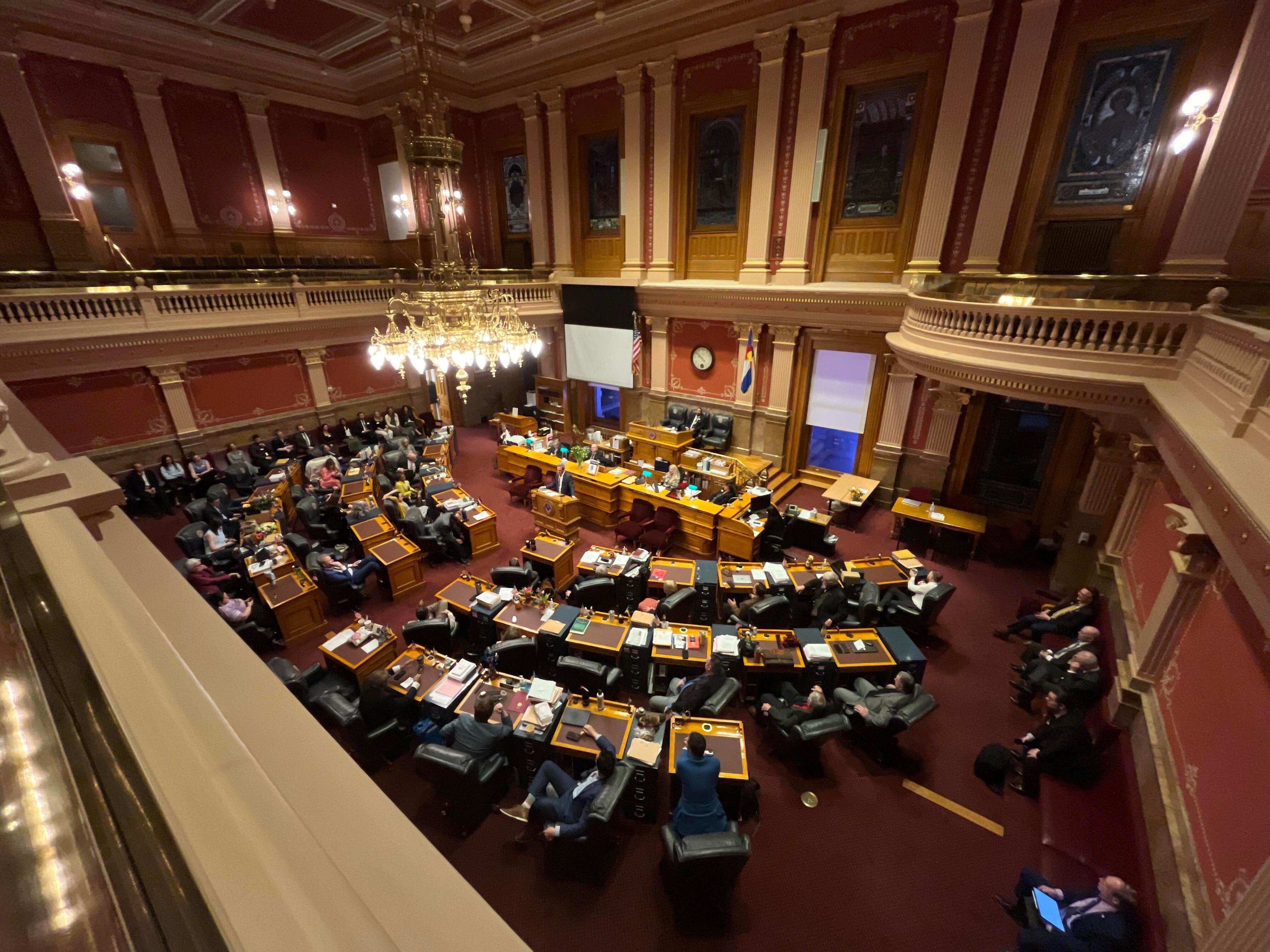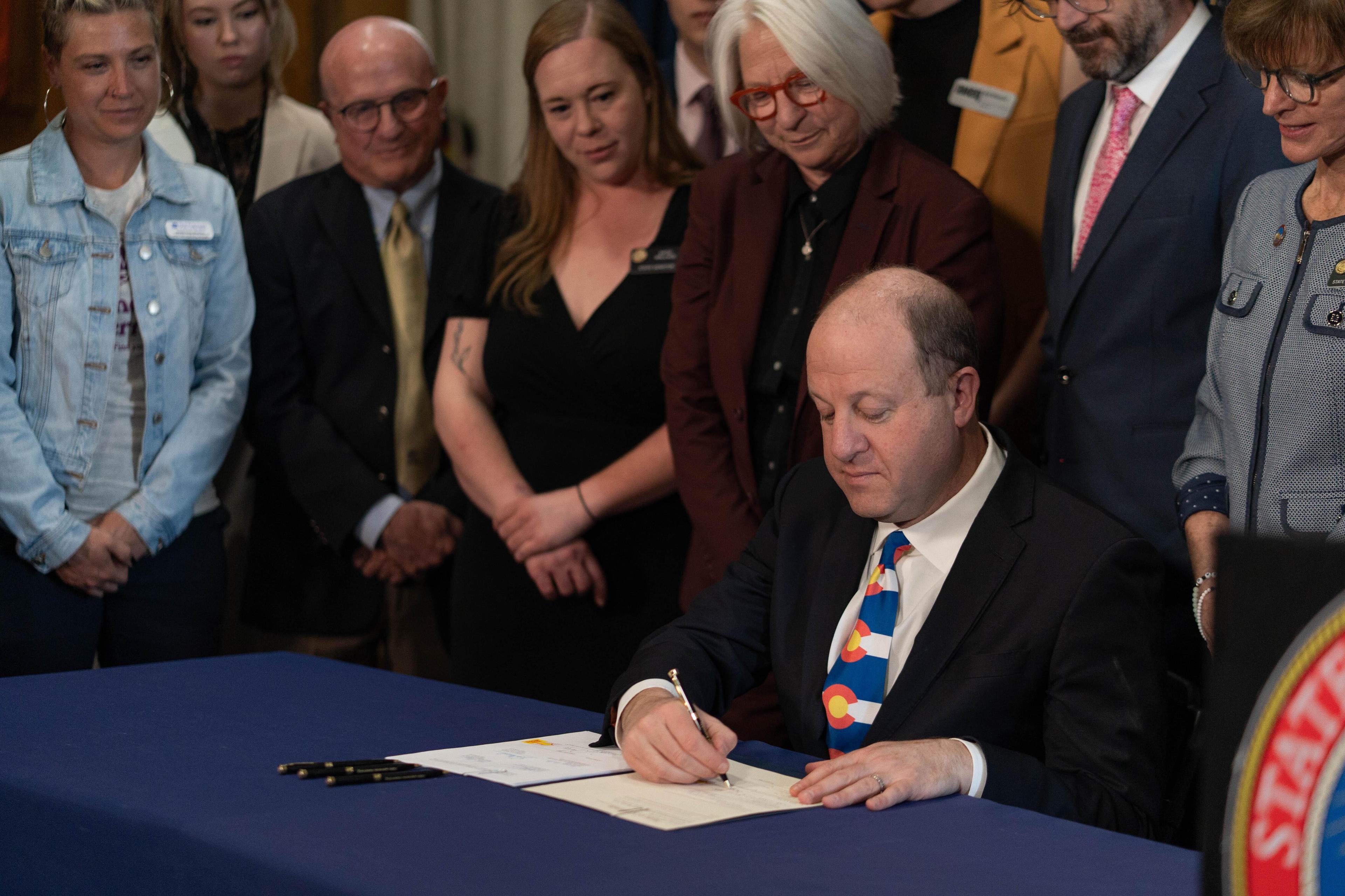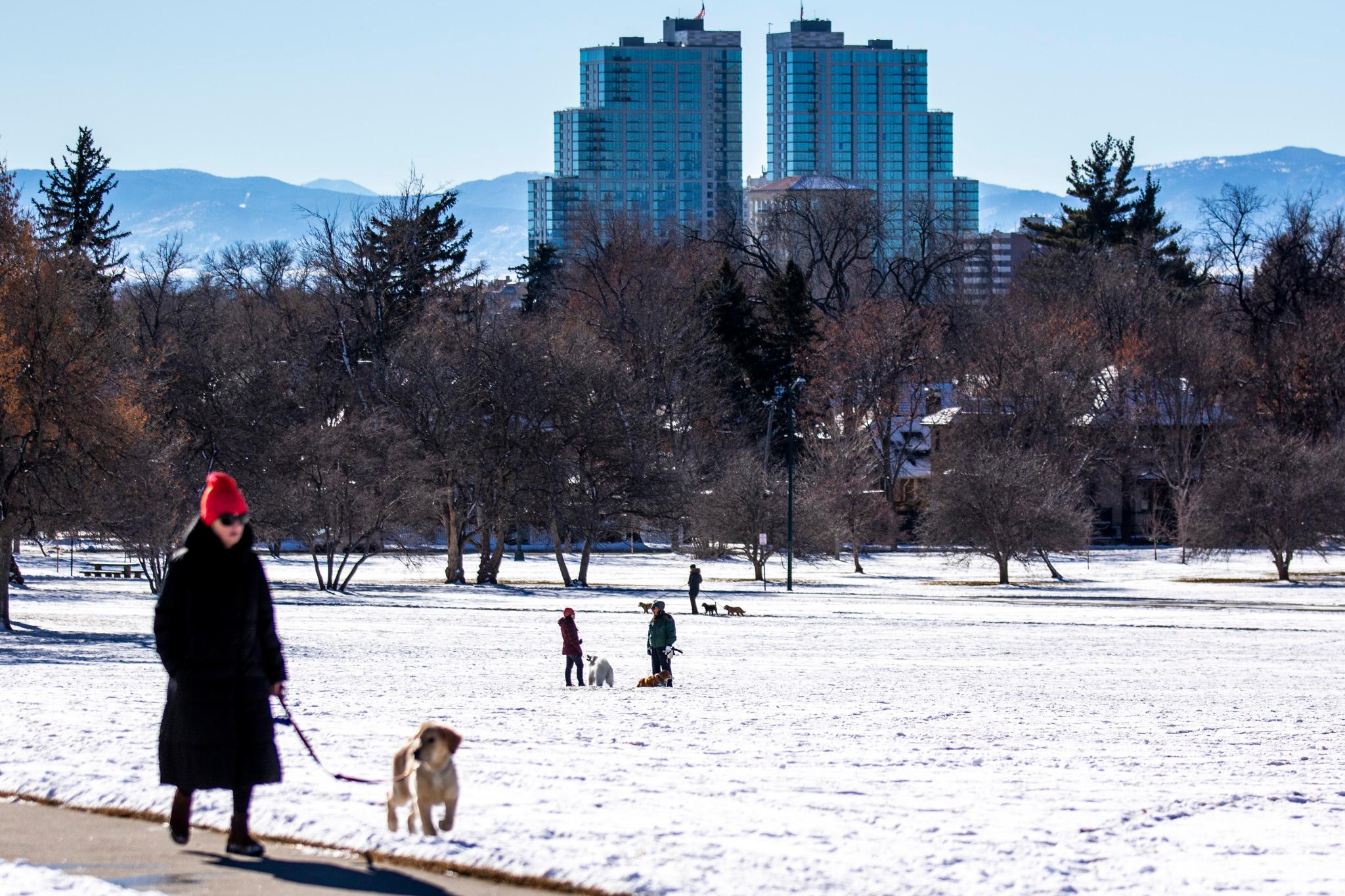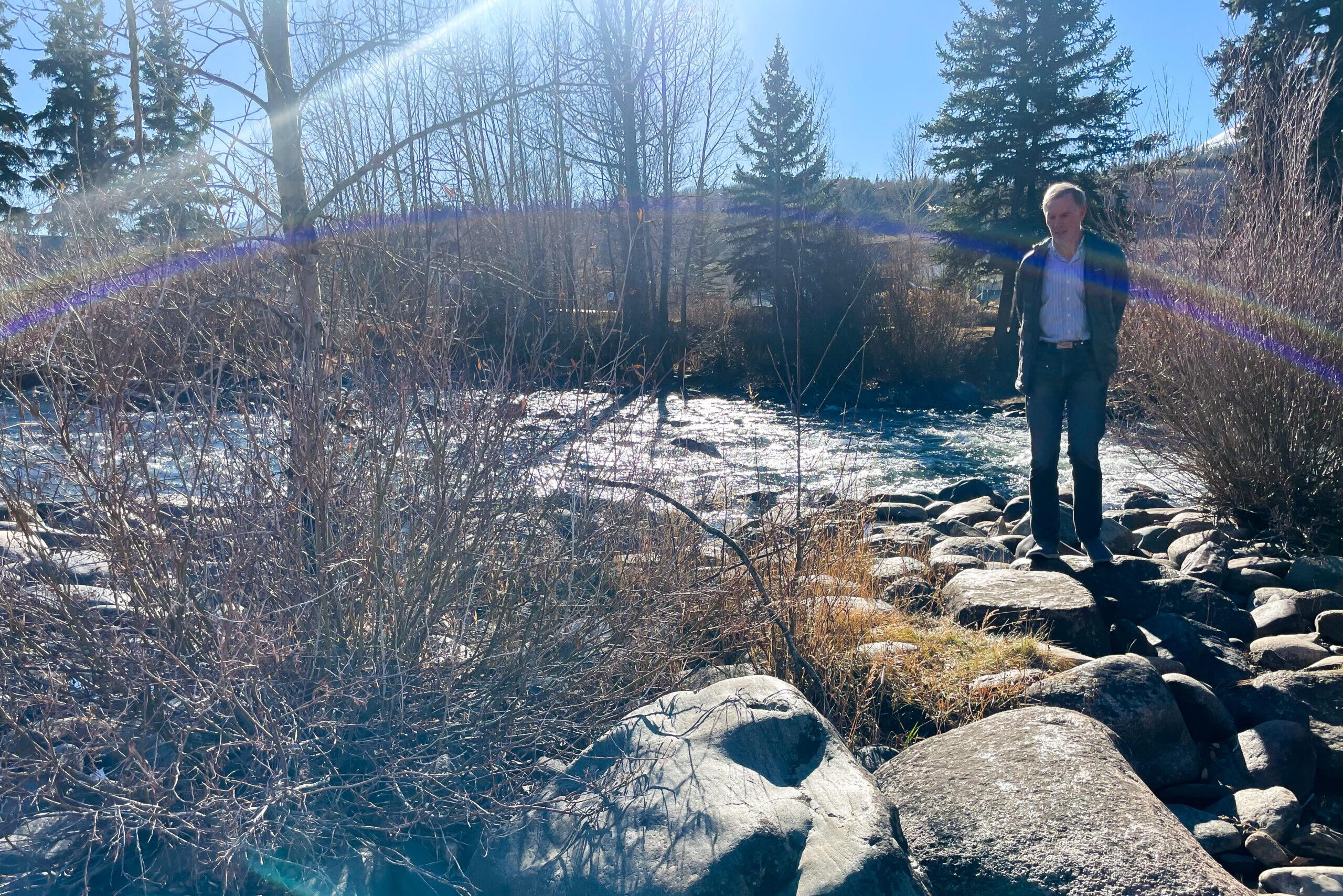
The West could be facing a water shortage in the Colorado River that threatens a century-old agreement between states that share the dwindling resource.
That possibility once felt far off, but could come earlier than expected. One prominent water and climate scientist is sounding the alarm that the Colorado River system could reach that crossroads in the next five years, possibly triggering an unpredictable chain-reaction of legal wrangling that could lead to some water users being cut off from the river.
Brad Udall, a senior water and climate scientist at Colorado State University’s Colorado Water Institute, sits by the Blue River in Silverthorne, which is filled with the snow and rain that falls in the Rocky Mountains of Colorado.
Water from the Blue River feeds the Colorado River and the tens of millions of people who rely on it across seven western states, 30 Native American tribes and Mexico.
The flow of the Colorado River has dropped 20 percent since the 1900s. Roughly half of that decline is due to climate change, which has fueled a 20-year megadrought across Colorado and the West. That rapid decline could soon cause problems between the states that share this water, Udall said.
Almost 100 years ago, seven states signed the Colorado River Compact, which lays out how much river water each state gets.
Udall said the deal contains a fatal flaw: fixed numbers, which were set when climate change wasn’t a concern.
“You can't have fixed numbers in a declining system,” Udall said. “That's going to unduly impose pain on [parties] that are completely undeserving and never signed up for that.”
Part of that agreement requires states in the upper Colorado River basin — Colorado, Wyoming, Utah and New Mexico — to keep a certain amount of water in the river to ensure the flow reaches states in the lower basin, including Arizona, California and Nevada. That agreement was amended in the 1940s to ensure river water also reached Mexico.
If the river keeps drying up, that agreement could soon be broken. That could trigger a formal water delivery shortage and what’s known as a “compact call” for the first time. The result could mean upper-basin states, including Colorado, are forced to cut off some water users to make sure there is enough water in the river to flow downstream.
“That will be a day of reckoning for the upper basin,” Udall said.
Udall’s projections for the Colorado River aren’t a certainty, but if climate, drought and water conditions continue as expected over the next five years, the amount of water delivered from the upper-basin states could drop below the agreed-upon 10-year running average amount of about 8.2 million acre-feet per year for the first time.
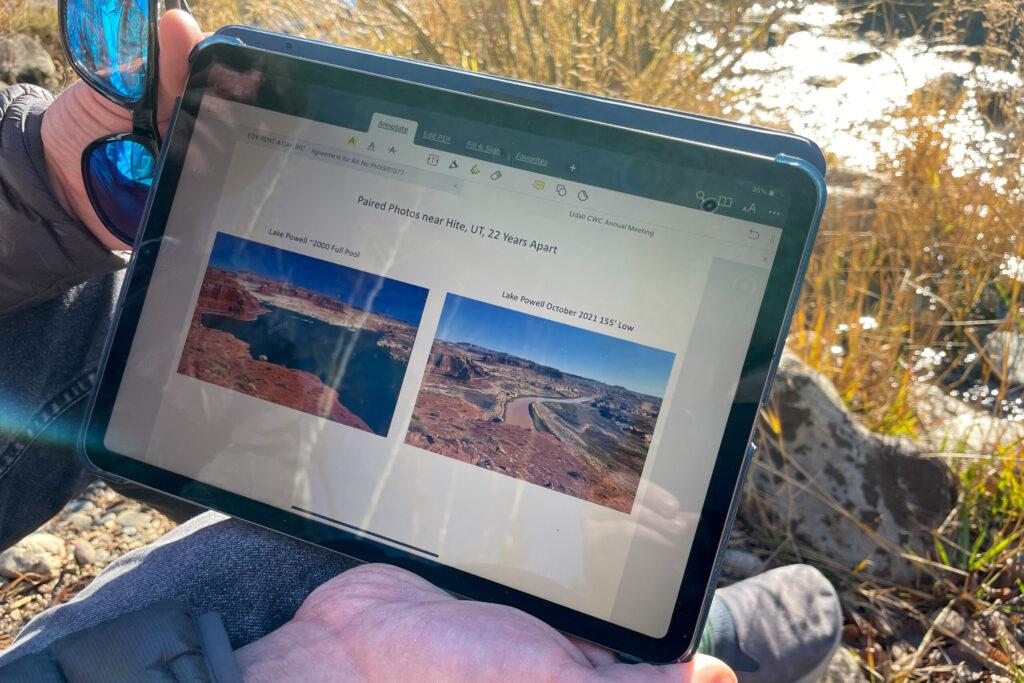
A formal water delivery shortage triggered during that time is much sooner than most expected — and it’s unclear what would follow.
This is where Lakes Powell and Mead come in. The two largest reservoirs in the United States are filled with Colorado River water. Each hit their lowest levels on record this year, which caused the federal government to take emergency action for the first time. The U.S. Department of the Interior cut water use in the lower basin and sent more water downstream from reservoirs in the upper basin.
Lake Powell is the reservoir where upper-basin states store the water they send downstream to the lower basin. Projections from the U.S. Bureau of Reclamation suggest it's unlikely Lake Powell will gain any significant amount of water in the next two years. If that trend continues for just a few more years, Udall said the dropping reservoir levels could trigger a formal water delivery shortage.
“Frankly I think you probably never, ever want to get there,” Udall said. He said states should work now to reduce water use or come to another agreement before there’s a violation of the Colorado River agreement.
Otherwise, he said, “all bets are off on how it gets resolved.”
Other water and legal experts don't know how a formal water delivery shortage would play out.
Larry MacDonnell is a senior fellow at the Getches-Wilkinson Center for Natural Resources at CU Boulder who has focused on Colorado River law for more than 20 years. He said Udall’s projections show that it’s time for the states to iron out exactly how they plan to respond to a water delivery shortage.
“It would be ridiculous to get to that point and then start to try to figure out what to do about it,” MacDonnell said.
It’s unclear how Colorado would respond.
Becky Mitchell, the director of the Colorado Water Conservation Board, declined an interview request from CPR News. In an emailed statement, she said Colorado is committed to working with the other basin states and water rights holders through current and future water challenges.
MacDonnell said one simple approach to keeping more water in the Colorado River is the priority system, which would favor users who own older water rights and potentially cut off newer water rights-holders. That could hit water utilities along the Front Range particularly hard since they hold many of the junior water rights in the state, MacDonnell said.
“If they have to curtail much of the water that they rely on, that obviously will have great effects on users in the cities,” he said.
MacDonnell said states have considered gentler ways to keep more water in the river since it's up to each individual state to create a plan on how to come up with the amount of water they're required to share under the Colorado River agreement. State water officials are still trying to figure out what that plan is, and MacDonnell said there are many different options on how to respond to a delivery shortage.
“It's just a matter for the affected parties to come together and reach some sort of an agreement about what they think is the best way to go,” he said.
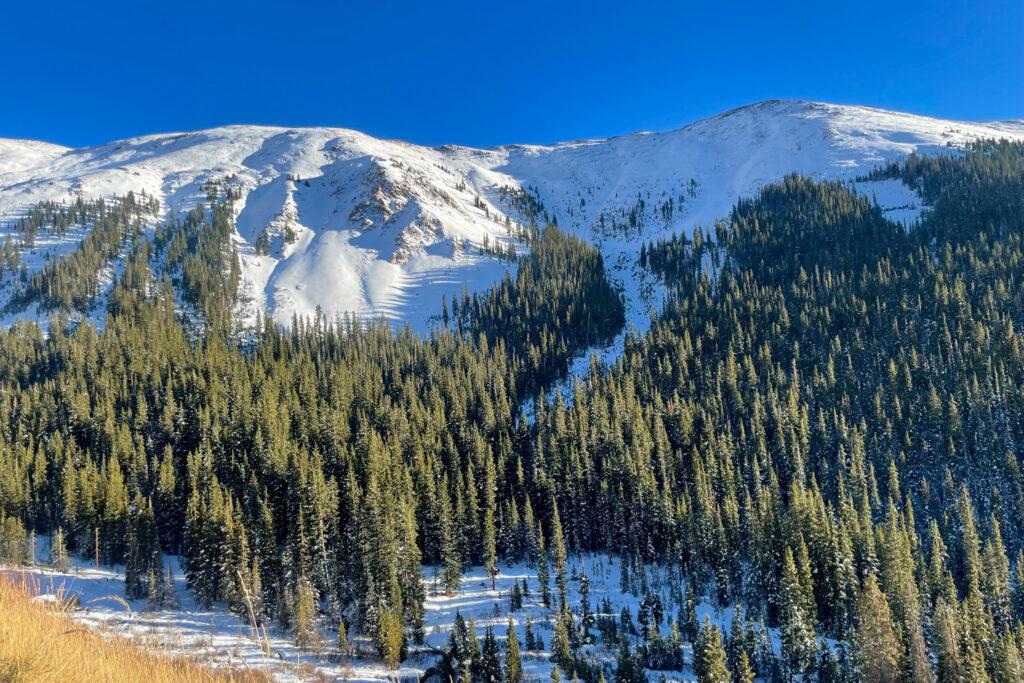
A formal water delivery shortage in the Colorado River might never happen.
MacDonnell said upper-basin states aren’t using the full amount of water they’re entitled to under the Colorado River agreement, so they might be able to convince a court that climate change is the biggest reason the river’s flow has dropped.
But Jim Lochhead, the CEO of Denver Water, said the utility is drafting a plan to continue operations if it's ever forced to take a water cut. He said it would have significant economic consequences for the Front Range and western Colorado, where the Colorado River flows.
“I don’t want to predict a doomsday scenario in the event that that happens,” Lochhead said. “Because we would try and figure out ways to mitigate impacts to our customers.”
Lochhead said Denver Water likely wouldn't activate that emergency plan until there's a court order that cuts off supplies for Colorado water users.
Rosemary Carroll, an associate research professor of hydrology at the Desert Research Institute who lives in Crested Butte, said many farmers and ranchers would be put out of business if they are forced to reduce their water usage even further due to a delivery shortage.
“That’s a tragedy on the Western Slope,” Carroll said. “I don’t know the solution, but I know that everybody needs to come to the table and try to work this out.”
Carroll confirmed Udall’s projections and agrees there’s a chance a water delivery shortage could hit in the next five years. She said less water is making it into the river and reservoirs because climate change is leading to hotter temperatures, drier soils and thirsty plants that absorb snowmelt before it ever gets to a stream.
She said it would require back-to-back years of above-average snowfall to counteract that warming and produce the same amount of water that used to be generated in a typical year.
“It's definitely a call to action to come up with new ways to think about how this system is managed and what its future looks like,” Carroll said.
More about the Colorado River
- The most endangered river: A conservation group considers the Colorado River the epicenter of the nation’s water and climate crisis.
- Lake Powell dangerously low: As the reservoir dries up, there’s growing concern about the future of hydropower production.
- What happens if the river keeps drying up: It could trigger a chain-reaction of legal wrangling that could lead to some water users being cut off from the river.
- Tribes fight for inclusion: Leaders of native tribes who depend on the river say a century-old agreement is fueling water inequalities.
- Where’s the water going?: Much of it gets absorbed by soil baked dry by hotter temperatures due to climate change.
This story was produced with Fresh Water News and the Colorado News Collaboration.



